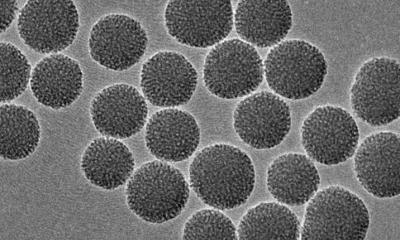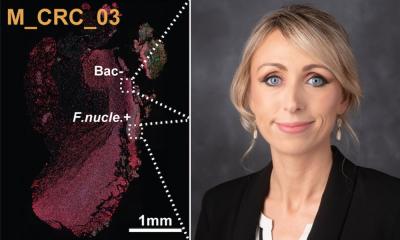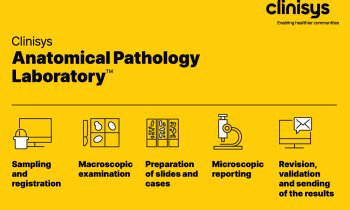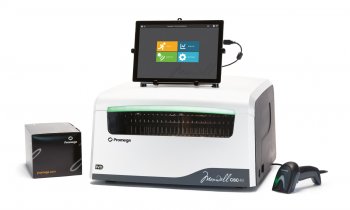News • Targeted drug delivery
Wireless NFC implant delivers chemotherapy deep into tumors
Dual-phoretic delivery enables localized chemotherapy without systemic side effects
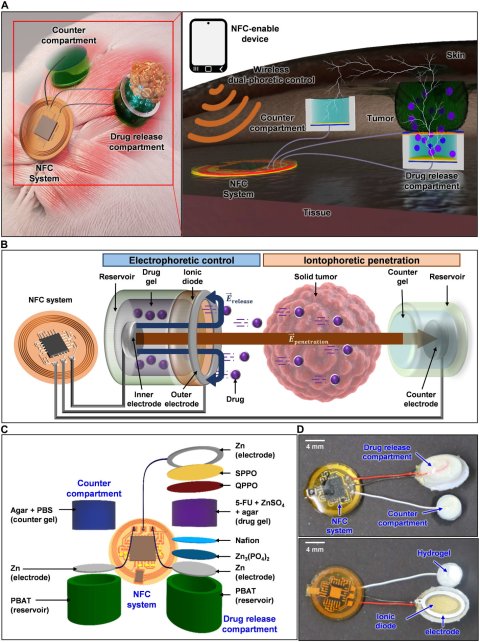
Image source: Choi SG, Kim S, Kim JW et al., Science Advances 2025 (CC BY-NC 4.0)
Researchers from Seoul National University (Prof. Seung-Kyun Kang), the Korea Institute of Science and Technology, KIST (Dr. Hyojin Lee), Kwangwoon University (Prof. Jeonghyun Kim), and Gyeongsang National University (Prof. Seongchan Kim) have developed a wireless implantable drug delivery system that enables anticancer drugs to penetrate deep into solid tumors—without harming surrounding healthy tissue. The multidisciplinary team, led by experts in materials science, bioelectronics, and pharmaceutical engineering, offers a new strategy to enhance the efficacy of chemotherapy while minimizing side effects.
The researchers published their findings in the journal Science Advances.
Solid tumors, due to their dense cellular architecture and elevated interstitial pressure, have long resisted conventional drug therapies. Anticancer drugs delivered via injection often remain trapped in the outer regions of a tumor, requiring high systemic doses to achieve therapeutic effect. This approach increases the risk of severe side effects such as immune suppression, gastrointestinal toxicity, and the rapid emergence of drug resistance.
To solve this challenge, the research team developed the Dual-Phoretic Wireless Drug Delivery System (DPw-DDS)—a fully implantable device that uses two ionic transport mechanisms. First, electrophoresis enables on-demand, pulsatile, and quantitative release of drugs using an ion-selective diode. Second, iontophoresis employs electric fields to push those drugs deep into tumor tissue.
Importantly, the system is wirelessly powered using Near-Field Communication (NFC), allowing fully untethered operation without the need for external wiring or batteries. All essential drug delivery steps—storage, release, penetration, and dosing—are integrated into a single, compact device designed for subcutaneous implantation.
In vivo experiments demonstrated that the system achieved over four times greater drug delivery efficiency than standard injection methods and reduced tumor volume by more than 50% within five weeks. Throughout the study, no damage to major organs or surrounding healthy tissue was observed, highlighting the system’s biocompatibility and safety.
This system [...] could reshape how we treat not only cancer but a wide range of diseases requiring precise and sustained drug delivery
Seung-Kyun Kang
Because the system does not require reformulating drugs, it can be readily applied to existing therapeutics, potentially reducing the cost and time associated with drug development. The platform also supports a wide range of drug types—including nanomedicines, protein therapeutics, and mRNA—making it suitable for treating cancer, chronic inflammation, and other precision medicine targets.
Looking ahead, the team aims to extend the platform to biodegradable, non-retrievable implants, eliminating the need for surgical removal and paving the way for long-term, low-burden treatment options. The integration of physical drug delivery principles with wireless bioelectronics marks a major step toward next-generation implantable therapies.
“This system integrates controlled release and deep tissue targeting in a compact wireless form. It could reshape how we treat not only cancer but a wide range of diseases requiring precise and sustained drug delivery,” said Prof. Seung-Kyun Kang (Seoul National University). “This platform provides a practical solution for improving therapeutic efficacy while minimizing side effects. We are actively working toward clinical translation and commercialization,” added Dr. Hyojin Lee (Korea Institute of Science and Technology).
Source: Seoul National University
13.07.2025



